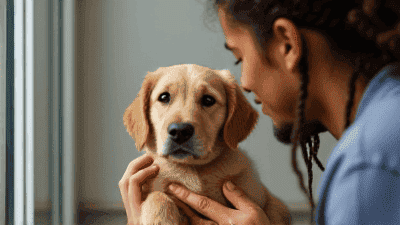
Adopting a pet is a life-changing decision that brings joy, companionship, and responsibility. For first-timers, the process can be both exciting and overwhelming. With so many questions to consider, it’s important to be well-informed before bringing a new furry friend into your home. This comprehensive guide addresses the most frequently asked questions about pet adoption, helping you navigate the process with confidence and ensure a smooth transition for both you and your new pet.
Millions of animals end up in shelters each year, and adoption gives them a second chance at life. By adopting, you’re providing a loving home to a pet in need.
Adoption fees are typically lower than the cost of buying a pet from a breeder or pet store. These fees often include vaccinations, spaying/neutering, and microchipping.
Adoption helps reduce the demand for puppy mills and unethical breeding practices, promoting responsible pet ownership.
Shelters and rescue organizations have pets of all ages, breeds, sizes, and personalities, making it easier to find the right match for your lifestyle.

From puppies to seniors, small breeds to large breeds, shelters have dogs for every type of household.
Whether you prefer a playful kitten or a calm senior cat, there are plenty of feline companions waiting for homes.
Rabbits, guinea pigs, hamsters, and other small animals are also available for adoption.
Some rescue organizations specialize in rehoming birds, offering parrots, cockatiels, and other species.
For those interested in reptiles or exotic pets, certain rescues focus on these unique animals.

Start by researching local shelters and rescue organizations. Visit their websites or social media pages to learn about their adoption policies and available pets.
Most shelters require potential adopters to fill out an application. This helps them match you with a pet that suits your lifestyle and living situation.
Once your application is approved, you’ll have the opportunity to meet the pet in person. This is your chance to interact with them and ensure they’re a good fit.
Some organizations may conduct a home visit to ensure your living environment is safe and suitable for the pet.
Adoption fees vary depending on the organization and the pet’s age, breed, and medical needs. These fees typically cover vaccinations, spaying/neutering, and microchipping.
After completing the adoption process, you’ll be ready to bring your new pet home. Be prepared to provide plenty of love, patience, and care as they adjust to their new environment.
Take your pet to the vet shortly after adoption for a checkup and to establish a care plan.

Set up a designated area where your pet can retreat and feel secure. This is especially important for shy or anxious pets.
Consistency helps pets feel more comfortable. Stick to a regular schedule for feeding, walks, and playtime.
Allow your pet to get to know each family member at their own pace. Avoid overwhelming them with too much attention at once.
It may take time for your pet to adjust to their new surroundings. Offer plenty of love, patience, and positive reinforcement.
Sometimes, unforeseen circumstances make it difficult to keep a pet. Common reasons include financial hardship, allergies, or housing restrictions.
If you must rehome your pet, contact the shelter or rescue organization where you adopted them. Many organizations have policies in place to take back pets if needed.
Never abandon your pet. Shelters and rescues are equipped to find them a new home in a safe and responsible way.
Many shelters rely on volunteers to help with tasks like cleaning, walking dogs, and socializing cats.
Shelters often need supplies like food, bedding, and toys. Monetary donations also help cover medical expenses and operational costs.
Fostering provides temporary care for pets until they find permanent homes. It’s a great way to help if you’re not ready to adopt.
Share information about adoptable pets on social media and encourage others to consider adoption.
Adopting a pet is a rewarding experience that comes with responsibility and commitment. By understanding the adoption process, choosing the right pet, and preparing for their arrival, you can ensure a smooth transition for both you and your new companion. Remember, shelters and rescue organizations are valuable resources that can guide you every step of the way. With love, patience, and care, you’ll be well on your way to building a lifelong bond with your adopted pet.